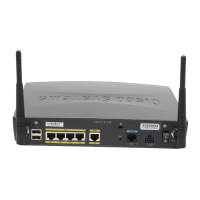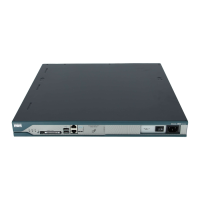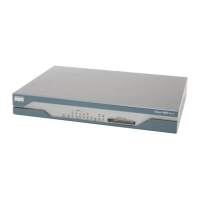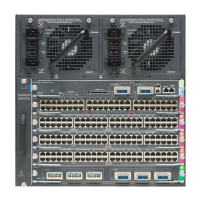14-2
Cisco 850 Series and Cisco 870 Series Access Routers Software Configuration Guide
OL-5332-01
Chapter 14 Troubleshooting
ADSL Troubleshooting
ADSL Troubleshooting
If you experience trouble with the ADSL connection, verify the following:
• The ADSL line is connected and is using pins 3 and 4. For more information on the ADSL
connection, see the hardware guide for your router.
• The ADSL CD LED is on. If it is not on, the router may not be connected to the DSL access
multiplexer (DSLAM). For more information on the ADSL LEDs, see the hardware installation
guide specific for your router.
• The correct Asynchronous Transfer Mode (ATM) virtual path identifier/virtual circuit identifier
(VPI/VCI) is being used.
• The DSLAM supports discrete multi-tone (DMT) Issue 2.
• The ADSL cable that you connect to the Cisco router must be 10BASE-T Category 5, unshielded
twisted-pair (UTP) cable. Using regular telephone cable can introduce line errors.
SHDSL Troubleshooting
Symmetrical high-data-rate digital subscriber line (SHDSL) is available on Cisco 878 and Cisco 1803
router models. If you experience trouble with the SHDSL connection, verify the following:
• The SHDSL line is connected and using pins 3 and 4. For more information on the G.SHDSL
connection, see the hardware guide for your router.
• The G.SHDSL LED is on. If it is not on, the router may not be connected to the DSL access
multiplexer (DSLAM). For more information on the G.SHDSL LED, see the hardware installation
guide specific for your router.
• The correct asynchronous transfer mode (ATM) virtual path identifier/virtual circuit identifier
(VPI/VCI) is being used.
• The DSLAM supports the G.SHDSL signaling protocol.
Use the show controllers dsl 0 command in EXEC mode to view an SHDSL configuration.
ATM Troubleshooting Commands
Use the following commands to troubleshoot your ATM interface.
• ping atm interface Command
• show interface Command
• show atm interface Command
• debug atm Commands
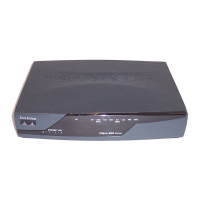
